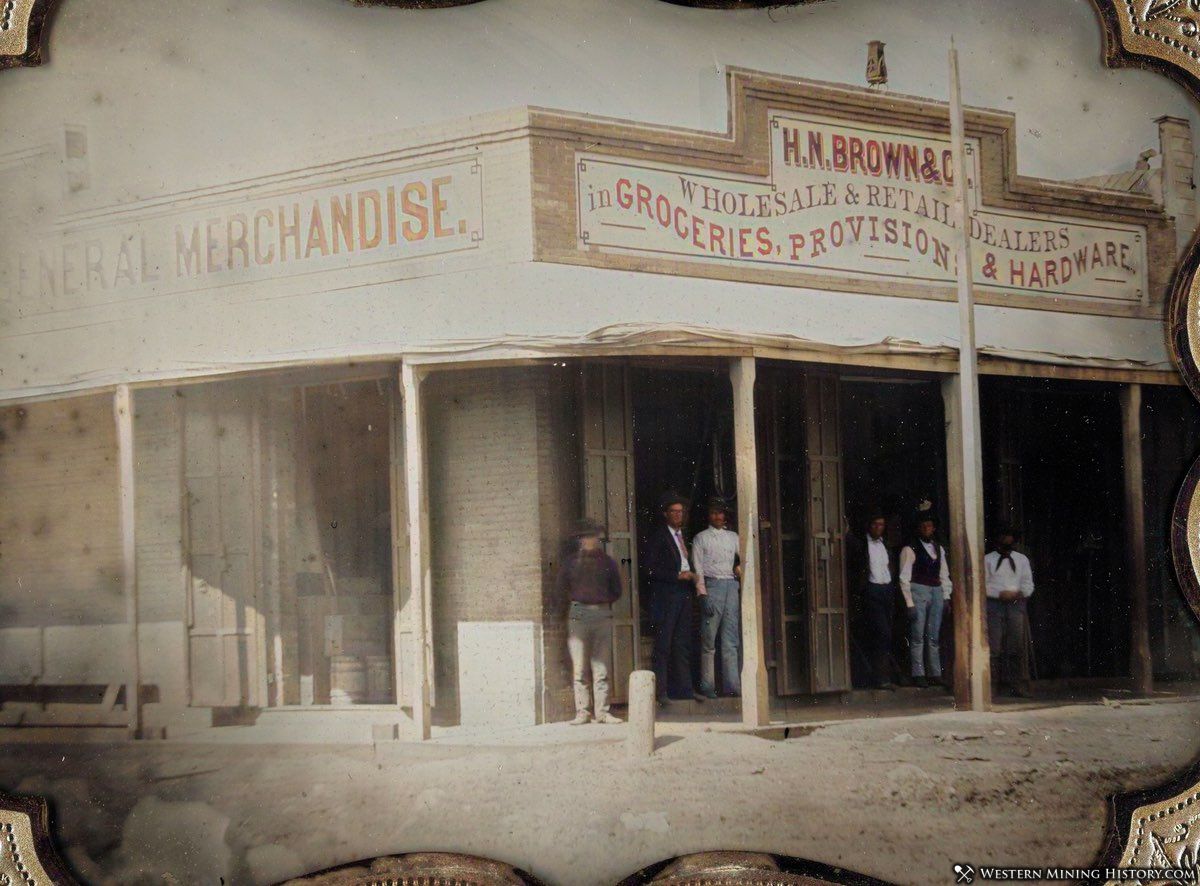Columbia History
In March of 1850, Dr. Thaddeus Hildreth led a prospecting party that discovered gold at this location. When word of the discovery spread, hundreds of miners started arriving at the scene. "Hildreth's Diggings" was the name of the original camp, and by mid-year thousands of miners were working the gold placers here.
The easily accessible gold was largely worked out in the first year, and a source of water was needed to drive the mines deeper into the ancient river gravels. During this time the original settlement was almost completely abandoned. The first ditches and flumes were built in 1851, the mines were once again active, and miners flocked back to the area. Late that year, the Columbia post office was established.
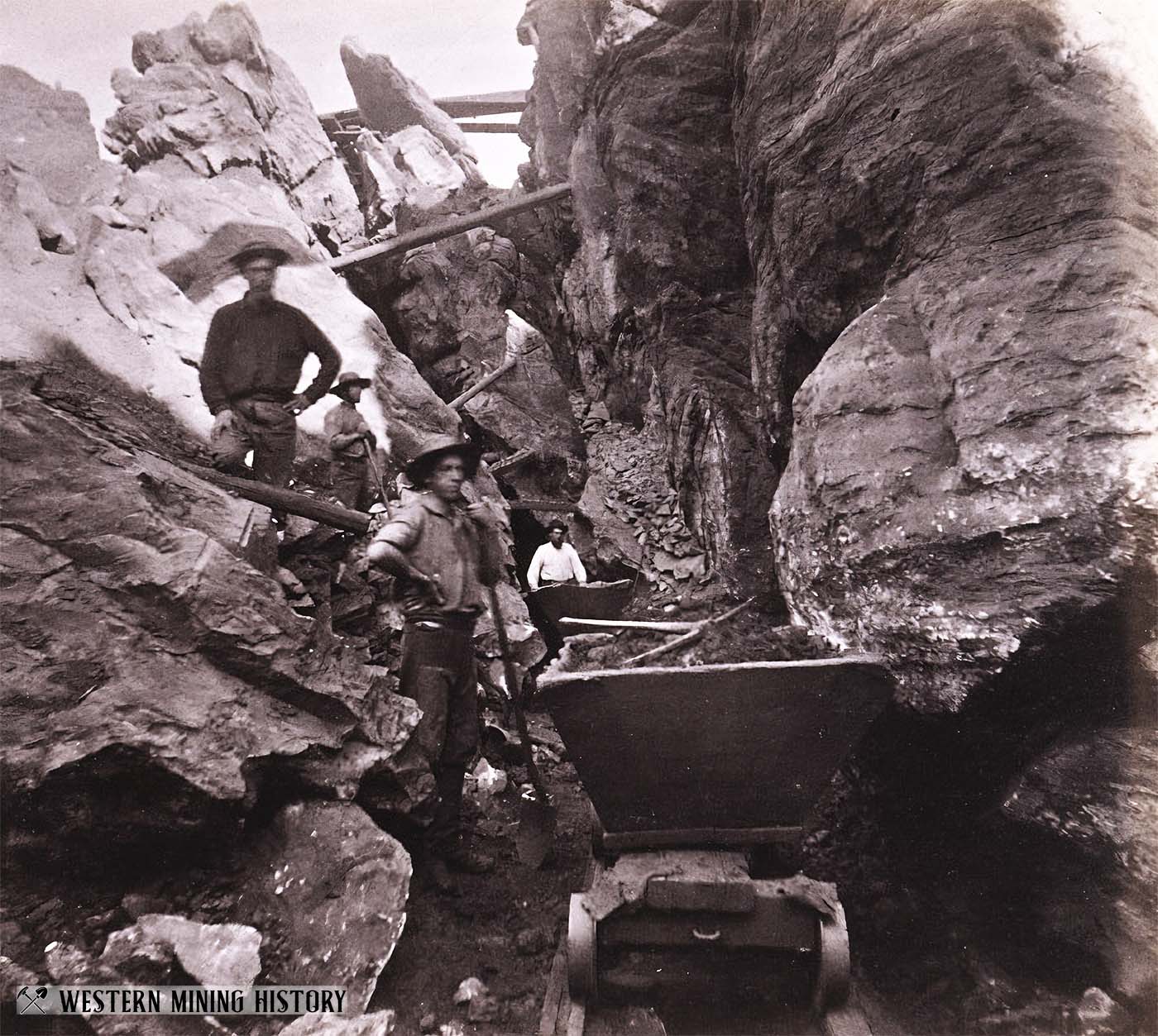
By 1852 Columbia had 8 hotels, 4 banks, 17 general stores, 2 firehouses, 2 bookstores, 1 newspaper, 3 churches, and over 40 saloons and gambling halls. In 1854 a major fire destroyed 6 city blocks. The town was rebuilt, this time with "fireproof" buildings constructed of brick and iron. In 1857, another fire burned down much of the town, but most of the newer brick buildings survived.
In 1854 the Columbia and Stanislaus River Water Company was formed to build a new 60 mile aqueduct to supply water for the mines. The project was not completed until 1858. While the aquaduct was not a financial success for the company that built it, it did allow for more extensive mining that kept Columbia active into the 1860s. Numerous photos of the extensive and elaborate placer operations were taken during this time.
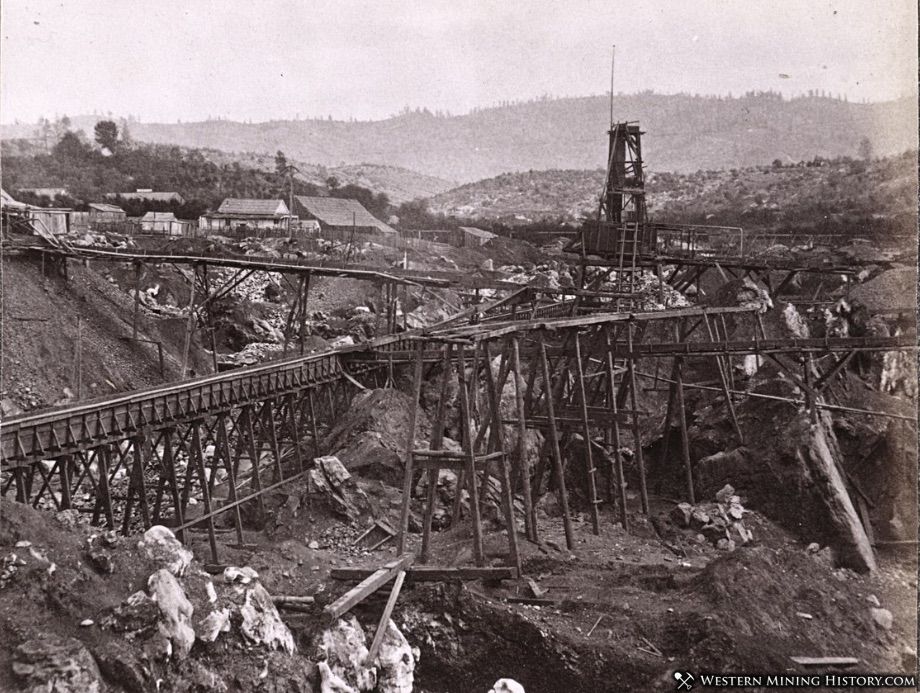
In 1859 Columbia was California's third largest city.
The mining operations of the 1860s began eating up some of the town itself. Miners dug under buildings and tore down houses to get at the gold beneath the city. The bricks from the destroyed buildings of Columbia were sold to the nearby town of Copperopolis for construction of buildings there.
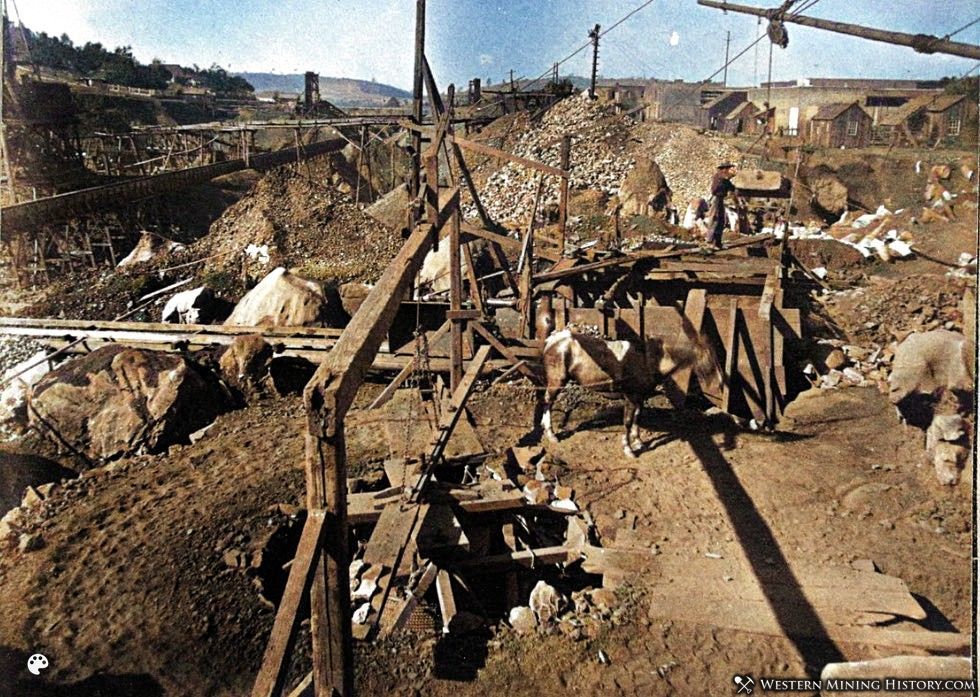
Columbia was one of the state's richest gold districts. An October 1858 edition of the Daily Alta California describes mines "as rich in gold as any known placer mines in the world." According to that same newspaper, in 1854 a 27 pound gold nugget was discovered at a Columbia mine. Between 1850 and the early 1900s, $150 million in gold was recovered here.
Columbia started declining in the 1860s and by the 1870s most of the miners had moved on to fresh ground. Remarkably, much of the town survived for decades until the 1940s when the remaining buildings were stabilized and included in the newly formed Columbia State Historic Park.
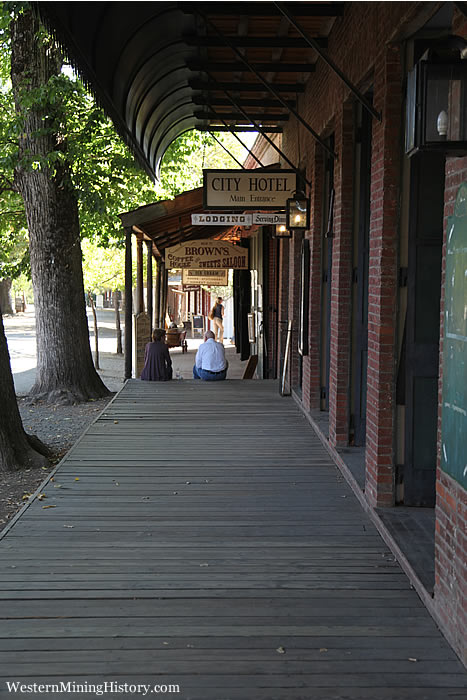
Today Columbia is one of the most remarkable and well-preserved examples of a gold rush town in America.
Historical Sketch of the City of Columbia
The following account appeared in a February, 1859 edition of the Daily Alta California.
Columbia was settled on the 7th day of March, 1850, by Dr. S. and George Hildreth, William Jones, Alex Carson, and John Walker, who were returning from a prospecting tour in Calaveras county. They reached the place about nightfall and decided to encamp for the night at the foot of what is now Main street. Rain falling after dark, they were obliged to stop the next day to dry their blankets, etc. While so employed, Walker thought he would try to raise the "color" in a little gulch which empties into Main gulch from the east.
The first pan yielded a fine prospect, and the company decided to remain all day to give the gulch a thorough examination. They worked upwards of two hours with pick and pan, and as the result, obtained one ounce.
They then fixed their camp on what they called Kennebec Hill. Water being scarce and in pools, they were obliged to carry their dirt some distance in sacks and "cradle" it; and by that process they made from six to eight ounces a day to the man.
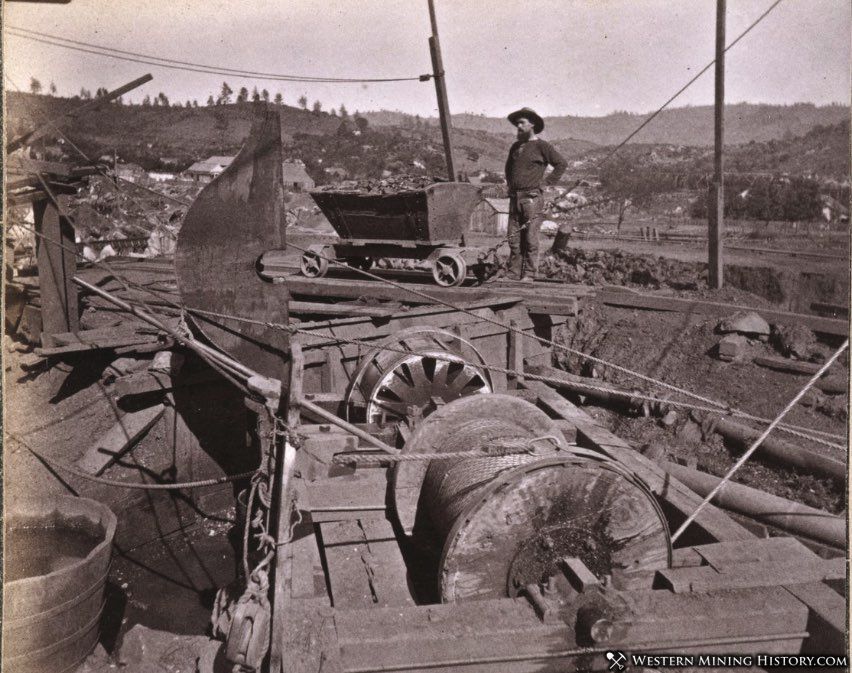
Capt. Advent was the next white settler on the gulch. From the first day's work he made two pounds and a half of gold dust. The second day be got a pound and a half, and continued to make at about that rate until July, when the water failed.
The news of rich diggings spread like wildfire all over the country, and on the 10th of April, 1850, there were upwards of seven thousand residents in the camp, most of them being located where Bensonville now stands. Among those who flocked to the settlement were a large number of gamblers, and at one time there were one hundred and forty-three monte-banks in operation, with a capital of upward of $500,000.
On the 29th of April, the place was called Columbia, in honor to the great navigator, by Capt. Collingsworth, Major Sullivan and D. M. Alexander. At the same time, it was found necessary to form a local government, and at a meeting held for that purpose, Major Sullivan and Col. Gregory were elected alcalde and constable. They immediately entered upon the duties of their respective offices. The first case before Major Sullivan, was an American complaining of a Mexican for stealing a pair of leggings; the Mexican was fined three ounces for stealing, and the American one for making complaint.
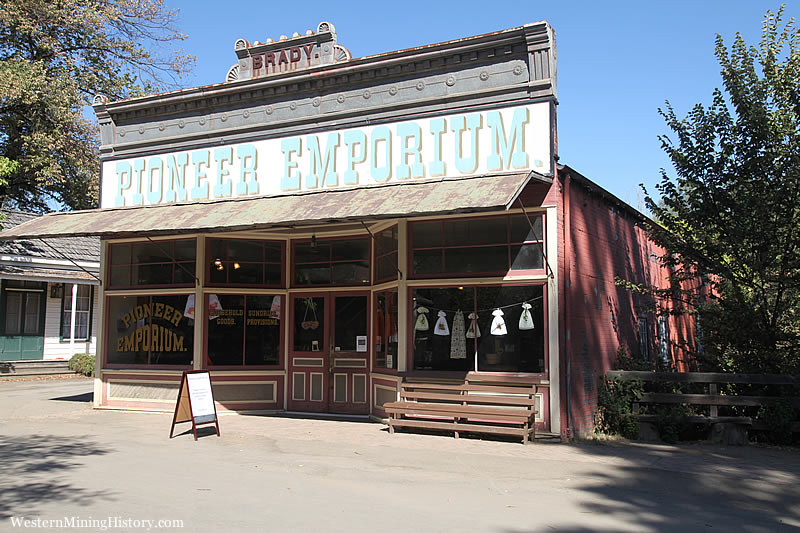
On the 1st of June, the Foreign Miners' Tax being enforced, drove the foreign population away. Water was scarce, and the settlement dwindled down to nine or ten persons. But early in the fall, a large number of persons returned to the camp, which had now taken its present location. Jackson and Stone erected the first wooden building in the place, at this time. Nick Brown also built a store on what is now the corner of Washington and Main streets. Mr. Brown brought the first wagon to Columbia.
In the spring of 1851, Mrs. Denola opened the first boarding house. Mrs. D. was the first white woman in the place, and the second in the county. Shortly after that Mrs. Haley opened the first school.
The F. & A. Masons established a Lodge in August, 1851. This Lodge is one of the most flourishing in the State.
On the 25th of October, W. Gove established the Columbia Star newspaper, which expired after its fifth number. This paper was printed on one of the " old wooden presses of Ben. Franklin's city — the father of newspapers on the Pacific." It was burned by Gove and his friends on the 13th of November, 1851, of which net the Sacramento Union justly remarked — "A greater outrage never desecrated the name of an American town, or disgraced American citizenship."
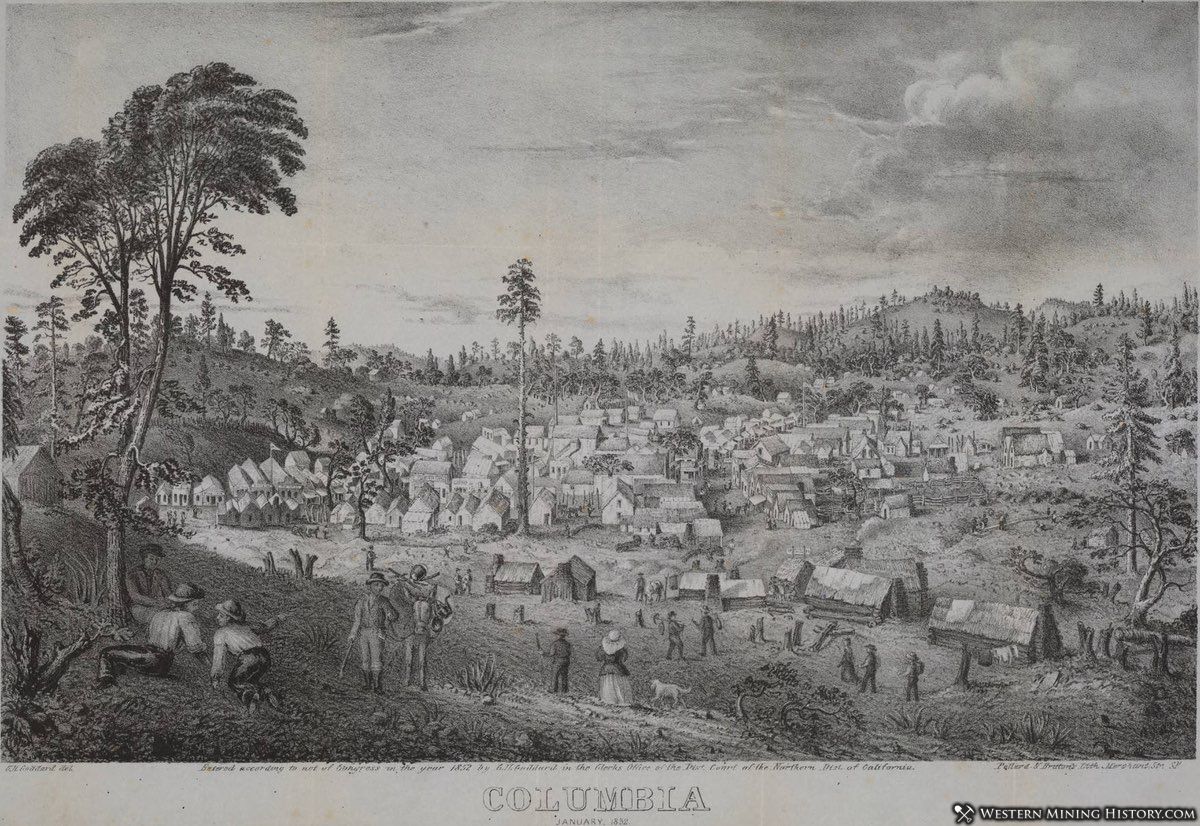
In June, 1851, Adams & Co. opened an express office in the place. The post office, with A. A. Hunnewell as postmaster, was opened in October. Wells, Fargo & Co.'s express and banking house soon followed. This fall witnessed the establishment of the Gazett, which expired in the spring of 1858.
The Methodist Episcopal Church, North, a Lodge of I. O. of O. F., and a Division of Sons of Temperance, were organized in 1853.
In May, 1854, the place was incorporated as a town; and on the 10th July, 1834, was almost entirely destroyed by fire. Donnell & Parsons' brick store, on the corner of Washington and Main streets, was the only store saved. The loss by this fire was upwards of $500,000.
The town was rebuilt in a. much better and substantial manner.
The Columbia Clipper was established in May, 1854.
The Alta California Telegraph Company completed their line to Columbia in February, 1855, and was in operation on the 15th of February, 1856. The Pacific Express Company established a branch office in February.
On the 23th August, 1857, the town was again destroyed by a fire, which commenced in a Chinese house, and ended by causing the death of five men, and the destruction of property worth nearly $1,000,000. The persons who lost their lives were H. N. Brown, Capt. Rudolph, Mr. Toomey, E. A. Beason. and Capt. Advent. They were killed by an explosion of some powder in the store of H. N. Brown & Co.
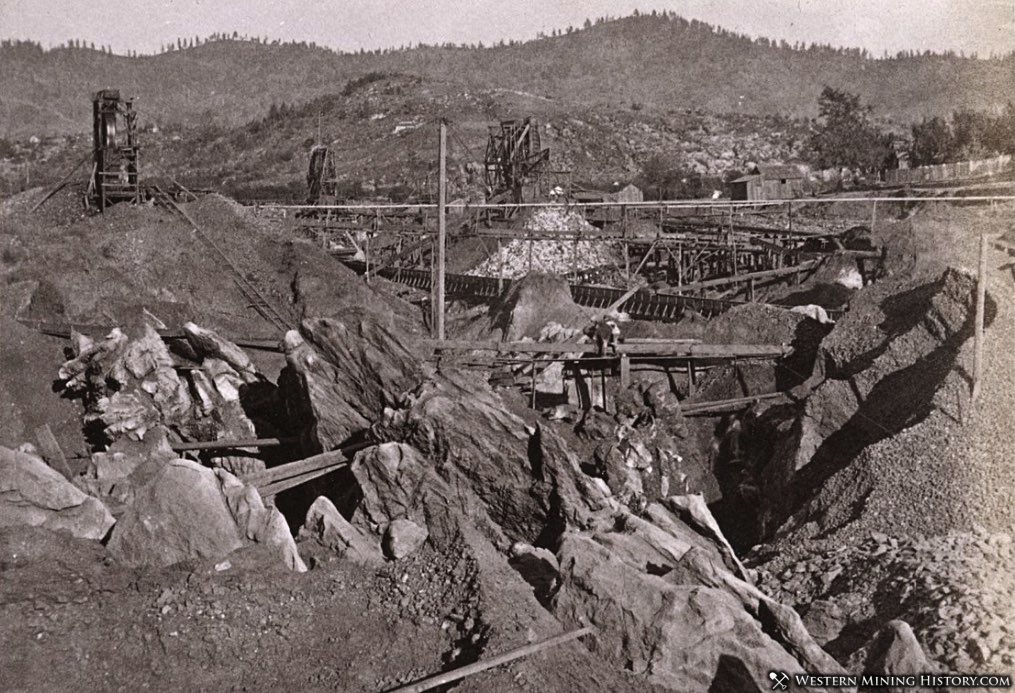
The town was speedily rebuilt in a much more durable manner, and now there are between seventy-five and eighty-five brick buildings in the city. January 1st, 1858, the town was lit with gas, by the Columbia Gas Company. In May, 1858, the town was incorporated a city. On the 28th of November, the water from the North Fork of the Stanislaus river flowed in the canal of the Columbia and S. R. Water Co., and the following day was a day of rejoicing among the miners. The evening of the 28th, Constable John Deary was shot by one H. Morgan, for which Morgan was hung by the people on December 2d.
I have now given a brief sketch of what I believe is the third city in population, public spirit and enterprise of California. Of her resources, government, institutions, etc., etc., I will, perhaps, speak of at another time.
The sale of lumber alone, in Columbia, amounts to more than $350,000 yearly. Our ditches have commenced again to flow full of water, and the miner is no longer seen on our street corners without occupation; and I predict, that in a few months, Columbia will not only prove herself the " gem of the Southern mines," but the "gem of California mountain cities."
Of the original settlers — Mr. George A. Hildreth, resides in Columbia; Dr. F. Hildreth, in Gardiner, Maine; Capt. Advent, was killed in the fire of 1857; A. Carson, resides somewhere in the Atlantic States, and of Billy Jones, I do not know where he at present resides.
Historic Buildings of the Columbia State Historic Park
Columbia State Historic Park is unique among Western parks in that it is both a park and an active town. Described as “a living gold rush town featuring the largest single collection of existing gold rush-era structures in the state”, Columbia is a must-visit destination for anyone interested in Gold Rush history or historic buildings.
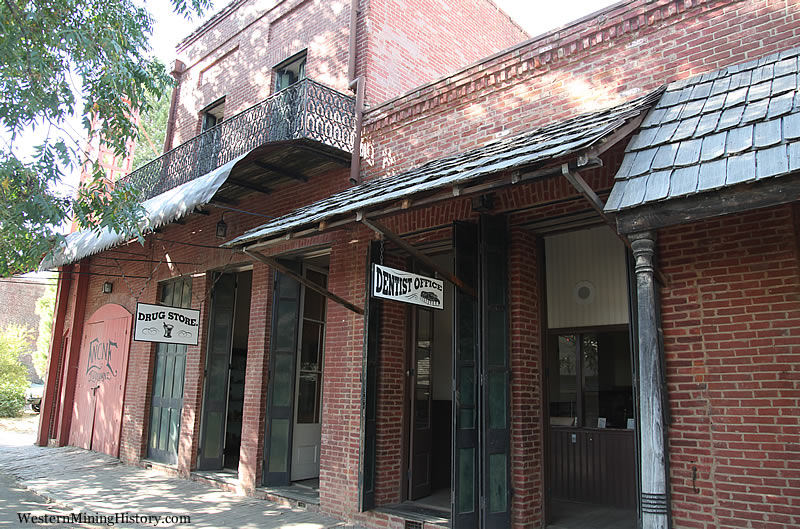
The first big fire swept through Columbia in 1854, destroying most of the wooden buildings in town. Fire again devastated the town in 1857. Columbia was rebuilt using primarily brick and iron to protect against fire, and many of the buildings you see today date back to this time.
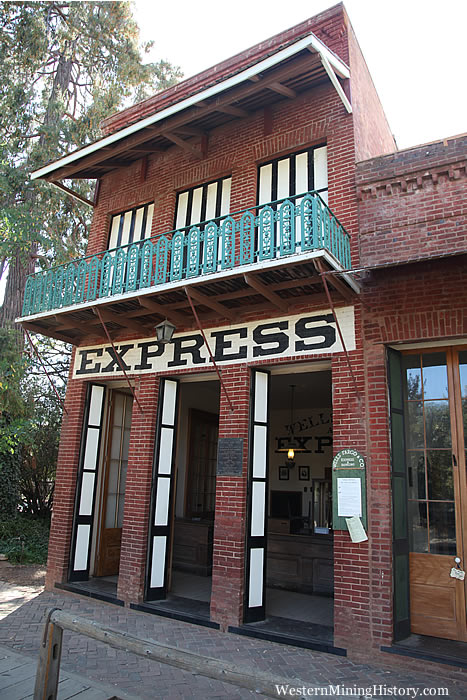
The Wells Fargo Express Building was originally built of wood, but the structure burned several times until a brick building was built in 1858. This brick building still stands today, and is preserved as an original Express office for visitors to experience. Wells Fargo was in the business of banking and secure transportation of goods, often gold from mines all over California.
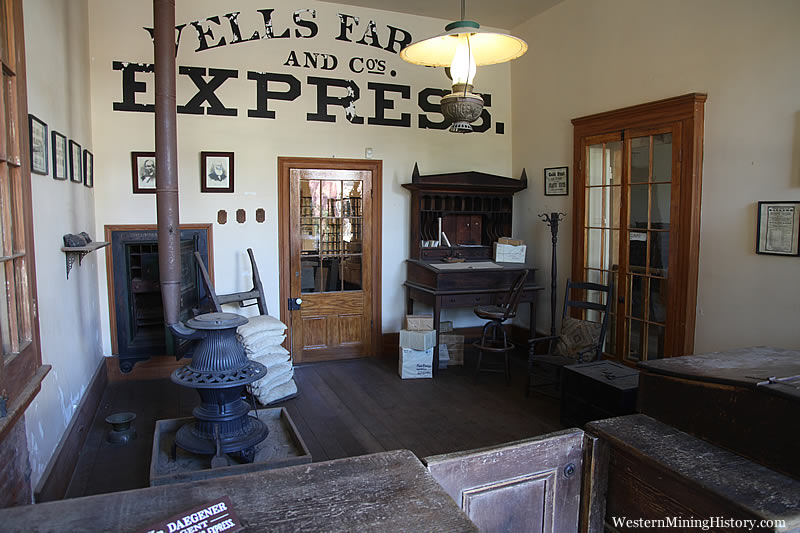
The D.O. Mills Building dates back to 1852 with a wood structure that burnt with the rest of the town in 1854. A brick building replaced it, which still stands today. The building originally housed a bank, a post office, and an assay and smelting office. The assay office was said to be accessible only by secret passage, presumably to safeguard the gold that would have been stored there. The first Telegraph in Columbia was installed in the D.O. Mills Building in 1855.
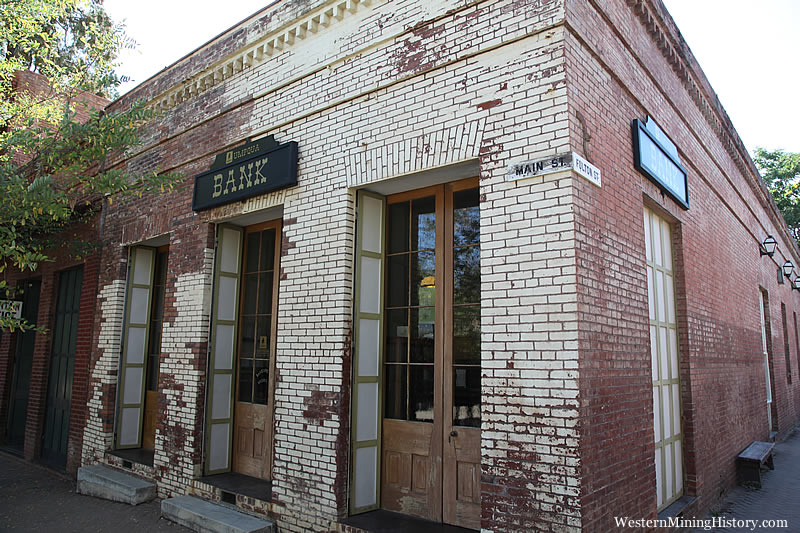
The City Hotel started as a brick structure built after the 1854 fire. Originally a saloon, in 1860 a hardware store moved in. George Morgan bought the building in 1865 and for decades added on to what was known as “Morgan’s City Hotel”. Today the building has been renovated and is in business as the City Hotel.
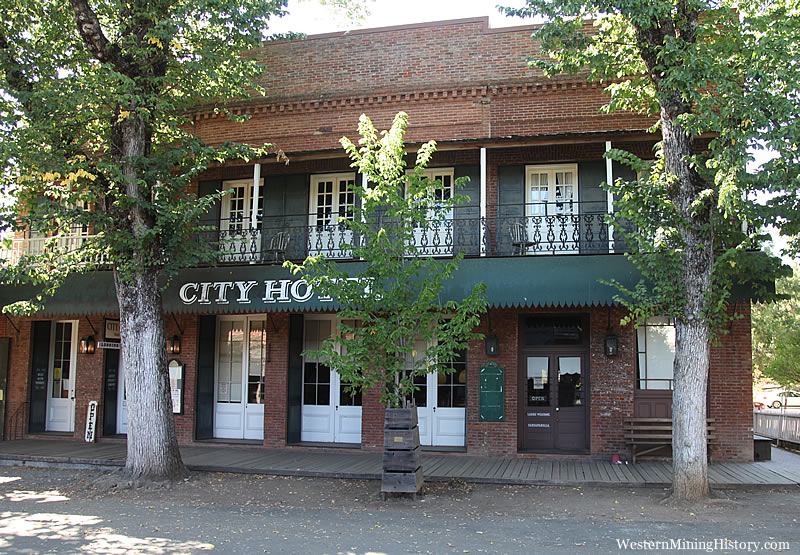
The Columbia Mercantile was originally known as the Magendie/Brunet Building. Like most buildings in Columbia, the building burned in the fire of 1854, and was rebuilt of brick in 1855. The building has contained a grocery and clothing store, a candy store, and since 1960 the building has housed the current mercantile business.
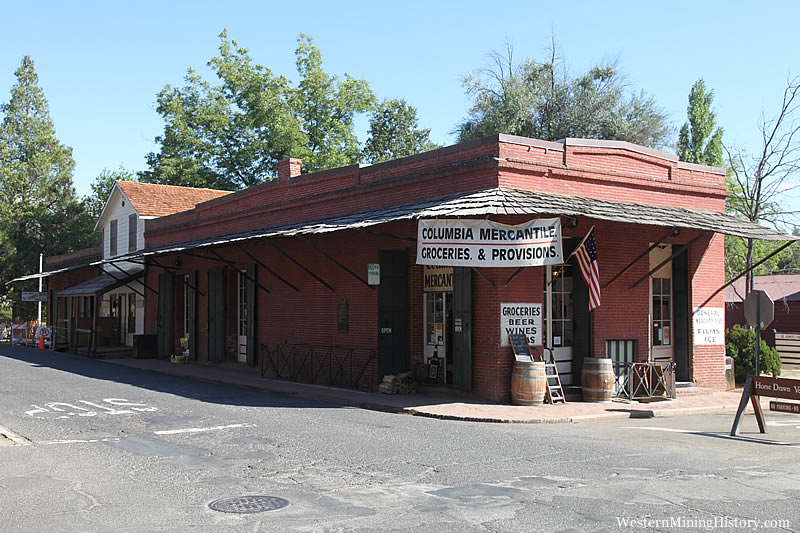
The Main Street Fire House in Columbia dates back to 1911. Before the current structure was built, the engine company leased a one story building on the lot, which was torn down and replaced with the current structure in 1911.
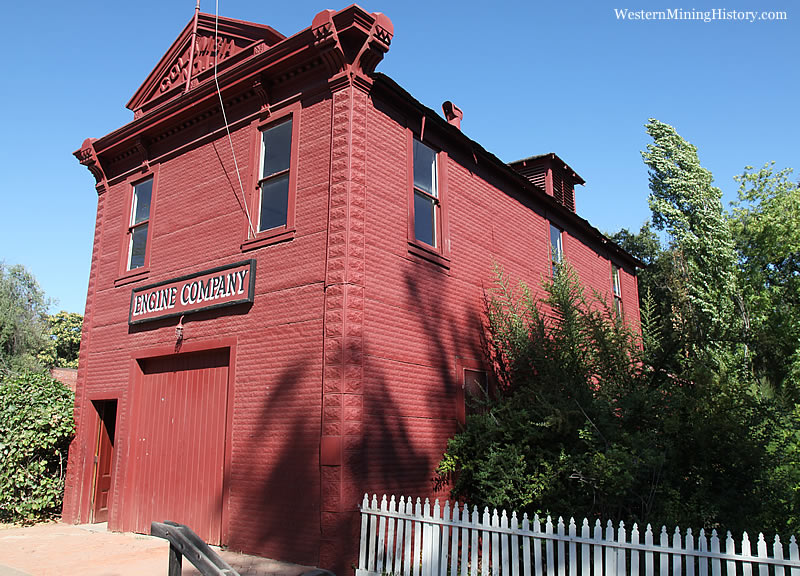
The Main Street Fire House still contains a decorative “Papeete” hand-pumped fire engine. The engine was originally built in Boston in 1852 for the capital city of Tahiti. The engine was being transported by ship, and after rounding Cape Horn it was abandoned in San Francisco after the crew abandoned the ship, presumable to join the California Gold Rush. The engine eventually made it’s way to Columbia in the late 1850’s and has been there ever since.
The engine has leather hoses and buckets and requires twelve men to operate.
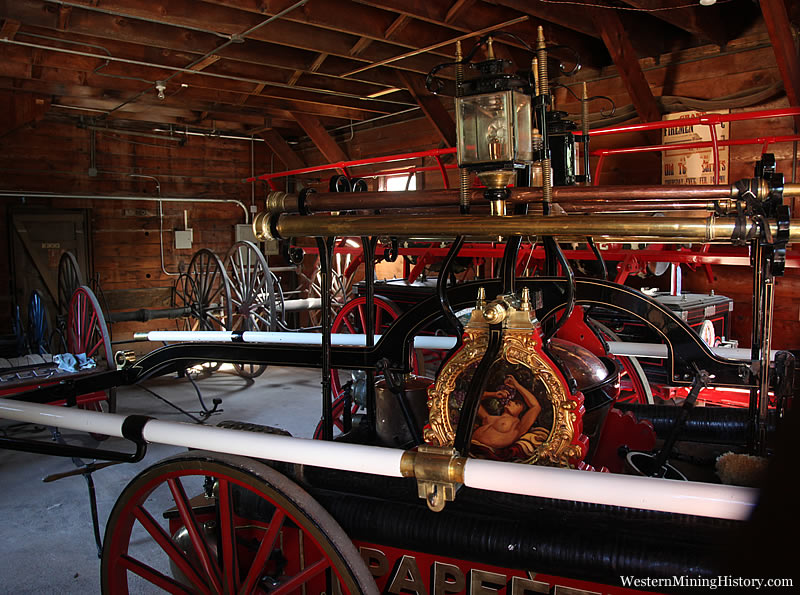
The Columbia School House is an impressive brick structure built in 1860. The school had 368 students in attendance in its first year and was staffed by two teachers and a principal. The school was in continuous use until 1937 when it was closed for not meeting earthquake safety requirements. The school was renovated in 1960 and is a rare standing example of an early gold rush school building.
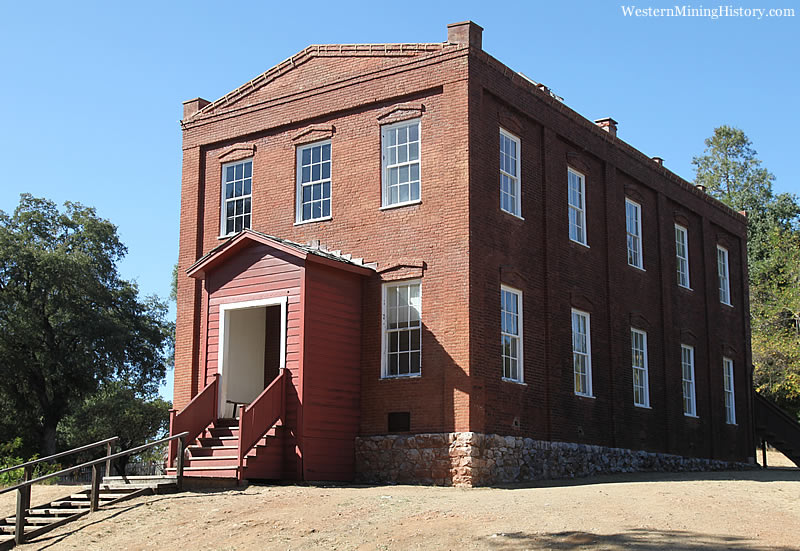
The first floor of the building was for elementary students and the top floor was for older students. Park visitors can access the top floor and see the original classroom, which was heated by two wood stoves, one in the back and one in the front of the room.
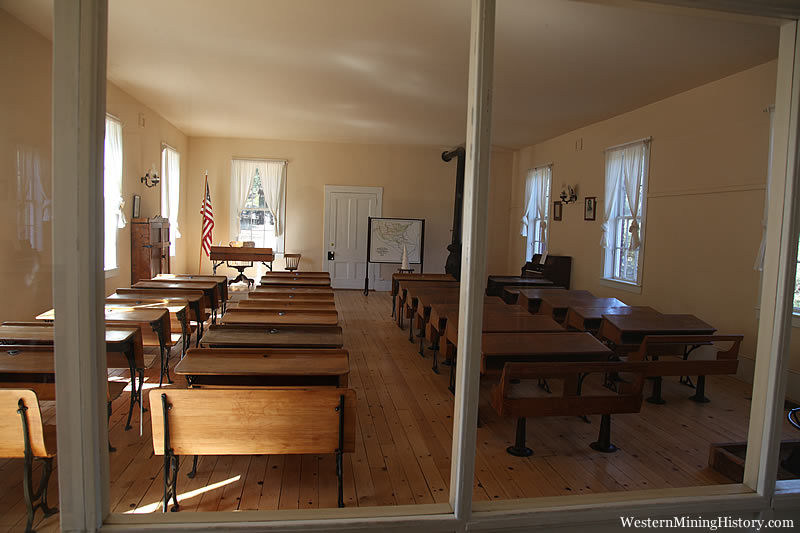
Columbia contains many more buildings and attractions than are covered in this article, so I would highly recommend anyone with an interest in mining history visit the park and plan on spending the good part of a day there.
The park’s website lists Columbia’s hours as “Columbia is a real town, it never actually closes. Most businesses are open from 10:00am to 5:00pm.”
It All Started With The Gold Rush
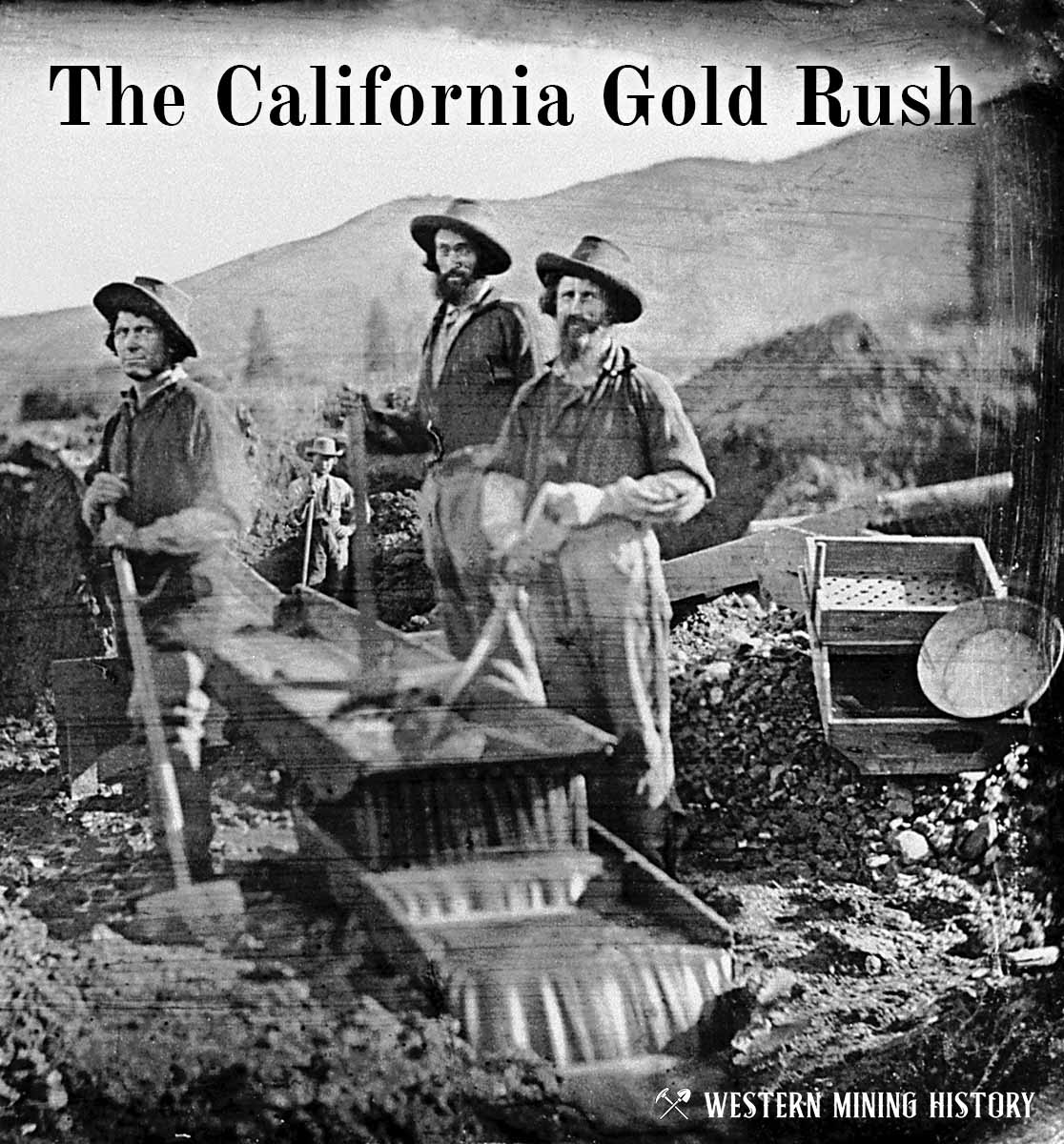
The great California Gold Rush kicked off the entire saga of western mining. Read about it at The California Gold Rush.
California Gold

"Where to Find Gold in California" looks at the density of modern placer mining claims along with historical gold mining locations and mining district descriptions to determine areas of high gold discovery potential in California. Read more: Where to Find Gold in California.
